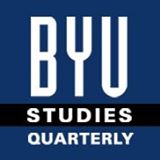BYU Studies

Keywords
BYU Studies, Bible, Millennial Star, Woman's Exponent
Abstract
Despite the gradual erosion of the Bible’s significance in American consciousness after the Civil War, the Bible remained “the most imported, most printed, most distributed, and most read written text in North America up through the nineteenth century.”1 The Bible’s authority was not static but was continuously established as individuals and the nation turned to it for direction on living a Christian life as well as for the answers to religious, social, and political issues.2 For most members of The Church of Jesus Christ of Latter-day Saints throughout the nineteenth century, the Bible likewise remained their primary religious text even as they embraced and incorporated the new works of scripture revealed through the Prophet Joseph Smith. Scholars such as Gordon Irving, Christopher C. Smith, Kent P. Jackson, and Philip L. Barlow have helped us understand how Joseph Smith and other Church leaders used scriptures in the 1830s and 1840s.3 However, with the notable exception of Barlow’s opus Mormons and the Bible, scholars have not studied how members of the Church of Jesus Christ used and interpreted the Bible in the later part of the nineteenth century. In his seminal work, Barlow offers an excellent contextualized analysis of major strands of biblical interpretation within the Church of Jesus Christ as demonstrated by such notable figures as Brigham Young, Orson Pratt, B. H. Roberts, Joseph Fielding Smith, and William H. Chamberlin.4 He also astutely recognizes that “[his work] is simply an attempt to make finite a nearly infinite task,” and he calls in his 1991 preface for “more time- concentrated studies” of how members of the Church are using the Bible as well as for studies that focus on lay individuals, men and women, who reside inside and outside of the United States.5 Unfortunately, Barlow’s call has gone virtually unanswered for the past thirty years.
Recommended Citation
Easton-Flake, Amy
(2021)
"The Bible in the Millennial Star and the Woman’s Exponent,"
BYU Studies: Vol. 60:
Iss.
1, Article 2.
Available at:
https://scholarsarchive.byu.edu/byusq/vol60/iss1/2
